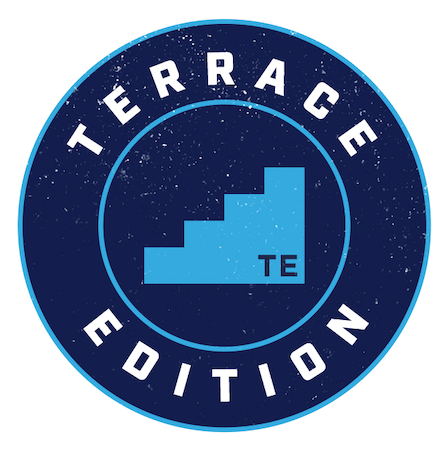Los Andes

Words: Groundspotters
Images: Groundspotters
Although we are going to talk about a stadium that currently belongs to an Argentinian third division team, it’s a ground that has a higher capacity than many in the second and first divisions.
For that, we move to southern Buenos Aires and more precisely to Lomas de Zamora, where it all began, in the Gallardón family milk shop.
There, in 1917, three childhood friends and schoolmates, decided to found a new football club, which they chose to call Club Atlético Los Andes, in homage to the first crossing in a hot air balloon over the Andes mountain range performed a year earlier, in 1916, by Eduardo Bradley and Ángel Maria Zuloaga.
1921 is a transcendental year in Los Andes´ history. Despite having lost the two friends he planned the club with in a tragic motorcycle side-car accident, Eduardo Gallardón decided to continue with the dream and registered the team with the Argentine Football Association.
At the same time, he replaced the blue club colours that had been used until then, with the white with red vertical stripes, which would give them the nickname “Milrayitas” (A thousand stripes´)
©Groundspotters/ Terrace Edition. Club Atlético Los Andes.
After playing their home games in various venues, on September 28 1940, Club Atlético Los Andes inaugurated their home with a 2-1 victory against neighbours Temperley.
In 1960, thanks to a campaign where fans brought a bag of cement in exchange for a commemorative pin badge, the Palacios stand was built, one of the largest in Argentine football.
In 1980, the stadium was named `Eduardo Gallardón´ after their founder, president, and the most important director in Los Andes´ history.
By 1995, the lighting system had been installed, which would undergo an improvement in 2013 and the Centenario stand was built in 2007 behind one of the goals, with space for 3,000 people.
From its first steps, Los Andes played an important part in the neighbourhood´s social and cultural life. The club organized big dances and carnival celebrations, film screenings and important music concerts such as Carlos Gardel, an emblematic tango figure, who is an honorary Los Andes member.
©Groundspotters/ Terrace Edition. Club Atlético Los Andes.
Serú Girán played a concert in the stadium in 1979 (one of the first Argentine rock concerts in football stadia) and, in 1987, a gig by iconic band Sumo would be the band’s last performance, as its singer, legend Luca Prodan, died two days later.
In the 1970s, given the width of the Los Andes field, midgets races were held (small cars on a mud circuit).
The Eduardo Gallardon stadium was, of course, also scene to many important football games.
In their promotion to the first division in 2000, in the semi-finals, they faced Banfield in what was known as `The Century Derby´ with a 0-0 draw at Banfield stadium followed by a 2-0 victory at Gallardón.
In 2013, at night, in a game against Temperley, an attendance of 25,000 people was recorded. This number would be surpassed in 2019, also against Temperley, when there were more than 30,000 fans in the stadium.
©Groundspotters/ Terrace Edition. Club Atlético Los Andes.
On a trans-national level, in the Eduardo Gallardón stadium, Los Andes won a friendly game against Independiente Santa Fé of Colombia in 2006, and beat the Trinidad and Tobago national team 2-1 in 2009.
Since the beginning of 2023, Los Andes has been carrying out a process of modernization and enhancement of both its stadium and associated spaces.
The tunnels and stands were completely painted, the press room have been remodelled and the club`s facade and its administrative offices were also renovated.
An investment was made to improve the playing surface, works are being done in the home and away dressing rooms and there are projected upgrades for the substitution benches.
With its educational complex, sports centre and the imposing Eduardo Gallardón stadium, Los Andes is a reflection of its supporters’ passion, an icon of Argentine football and an emblem of Lomas de Zamora.
Many thanks to Adrian Frangi and Martin Capoleccia from the culture and press departments of Los Andes.
©Groundspotters/ Terrace Edition. Club Atlético Los Andes.
©Groundspotters/ Terrace Edition. Club Atlético Los Andes.
©Groundspotters/ Terrace Edition. Club Atlético Los Andes.
©Groundspotters/ Terrace Edition. Club Atlético Los Andes.
©Groundspotters/ Terrace Edition. Club Atlético Los Andes.
©Groundspotters/ Terrace Edition. Club Atlético Los Andes.
©Groundspotters/ Terrace Edition. Club Atlético Los Andes.
You can find Groundspotters on X and Instagram: @groundspotters















